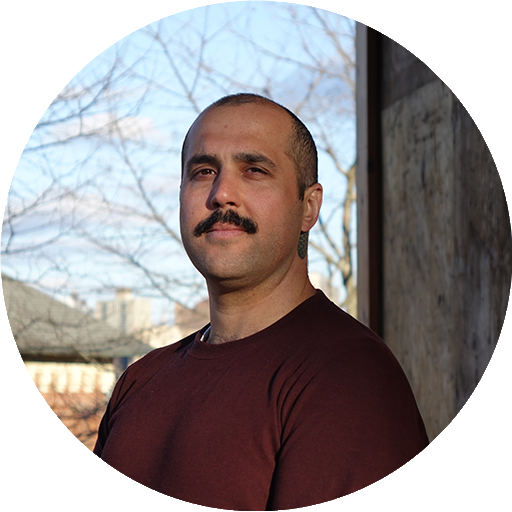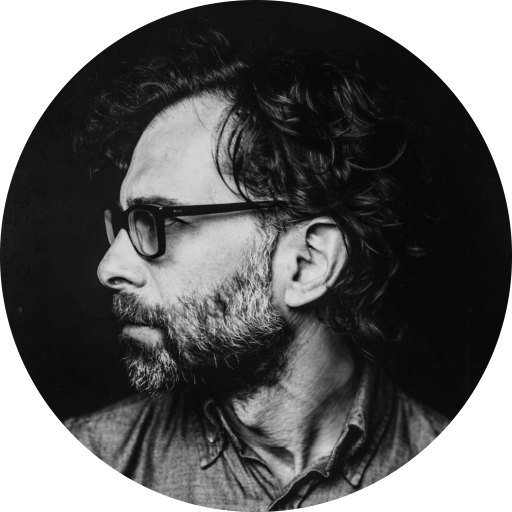A Choreographer Steps Out of a Giant Shadow (Her Aunt’s)
Brian Seibert, New York Times
Brian Seibert, New York Times

Imagine a mouth opening, as oval as an egg. Then, so slowly as to be nearly imperceptible, it stretches into the shape of Munch’s “Scream.” Now imagine that the face is part of a kneeling body, which curls and twists. The head, mouth still agape, tilts up and back as far as it can go.
This sequence in “Blast!,” a solo choreographed and performed by Ruth Childs, is on one level an exercise in letting weight guide movement. But the resulting images are intensely emotional, like the anguished figures in Picasso’s “Guernica.” Elsewhere in the work, Childs seems torn by a hurricane-strength force. Does the force come from within or from without? It’s ambiguous, but Childs’s commitment is not. She puts her body on the line.
Childs, 41, grew up in Vermont, but she has lived in Switzerland for more than 20 years. When she appears in “Blast!” at the Chocolate Factory in Queens, Wednesday through Friday, it will be her first time performing her own work in the United States.
But that doesn’t mean New York dance-goers will view her without preconceptions. Childs has a famous aunt: Lucinda Childs, one of the giants of American postmodern dance.
“People are going to compare me to Lucinda,” Childs said in a recent interview. (There’s a strong family resemblance.) “That’s both a privilege and sometimes difficult. In the long run, I don’t really care that much.”
(For her part, Lucinda said in an email that she was happy when Ruth started to choreograph.)
Ruth Childs wasn’t always so sanguine about the anxiety of this influence. “For a long time,” she said, “the way I separated myself from Lucinda was to be only a dancer, a performer, while Lucinda was the creator, the choreographer. I was super frightened to make my own work.”
The daughter of two engineers, one British, one American (Lucinda’s brother), Childs was first exposed to dance the way that many people are: When she was 5, her grandmother took her to the ballet. “And I insisted to my parents, ‘I want to do that,’” she said.
For the rest of her Vermont childhood, she trained in the expectation of becoming a professional ballet dancer. But at 19, she joined a contemporary dance company in Switzerland, Ballet Junior de Genève.
“I fell in love with European experimental dance,” she said. “With the intelligence, the humor, the audacity. I loved the idea of using your body onstage to make people think differently.”
Unlike some of her ballet-trained peers, she wasn’t afraid of ridicule and she wasn’t scared to improvise. She was intellectual and inclined to comedy. “I felt like: ‘Oh, this is my space. This is where I should be,’” she said.
That experimental scene was different from what Childs might have found in the United States — for one thing, it was much better funded — but it wasn’t entirely foreign. In the early 2000s, European dance went through a phase in which the influence of her aunt and her aunt’s colleagues in the 1960s collective Judson Dance Theater was intense. “In Europe, I was learning more about where I was from” — about the family lineage — “than I had growing up in Vermont,” she said.
Still, as Childs carved her own path as a freelance dancer, the specter of her aunt’s work loomed. It continued to deter her from making her own choreography, until it inspired her to try.
Around 2013, Lucinda asked Ruth to assist her on a program in France. Ruth asked her aunt to teach her one of her early works, “Carnation,” in which the soloist wears a colander as a hat and stuffs a sandwich of sponges into her mouth. Ruth began performing “Carnation” and other works by Lucinda. “And then I started getting ideas of my own,” she said.
In 2018, she created her first performance piece, a sound installation with the musician Stéphane Vecchione. The next year, she created her first dance, “Fantasia” (which she will perform in New York in January). Her company, Scarlett’s, borrows the name of a low-fi pop band in which she and Vecchione performed before she got up the courage to choreograph.
“Music is an integral part of why I like to dance,” Childs said. In “Blast!,” Vecchione’s sound design supplies an onslaught of percussion but also allows Childs to trigger sounds and amplify and alter those of her own body. “It changes a bit each time, so it affects me differently each time,” she said.
Keeping her reactions fresh is part of the goal. She wants to give herself goose bumps and give them to the audience, too. “How can you push abstraction until it becomes emotional? How can you overdo emotion until it becomes abstract?” she said. “‘Blast!’ makes a lot of people uncomfortable. It makes a lot of people laugh.”
Brian Rogers, the artistic director of the Chocolate Factory, said that he was attracted to the extreme way that Childs put her body in service of her work. “The effort and vulnerability remind me of what I used to see in our New York dance community but have been missing lately,” he said.
Violaine Huisman, the artistic director of L’Alliance New York, which is presenting Childs as part of its Crossing the Line festival, says she sees Child as a kind of bridge between American and European aesthetics. “She doesn’t hide where she comes from,” Huisman said, noting Childs’s classical training, European experimental approach and the influence of her aunt.
Childs acknowledges that aesthetic kinship. “What I love in Lucinda’s work is how repetition becomes so moving,” she said. “I try to convey that in my work, too.” But when her father, after watching “Blast!,” tied the circling in it to circles in his sister’s dances, Childs said, she rolled her eyes a little. Her aunt didn’t invent geometry.
Originally, Childs was scheduled to perform “Blast!” and another solo, “Delicate People,” which suggests a Neanderthal discovering sculptural beauty, in New York in October. But after she tore some ligaments, another dancer substituted for her in “Delicate People” and “Blast!” was postponed until November. (Through a partnership with L’Alliance, Childs is spending 2025-26 school year in New York as a fellow with New York University’s Center for Ballet and the Arts.)
The delay has an upside. The November date will allow the always busy Lucinda to see Ruth’s choreography for the first time.
Lucinda has tried to see Ruth’s work several times before, but scheduling conflicts got in the way. She said she was very pleased to finally have the chance.
And how does Ruth feel about that? “Excited,” she said, “and a little nervous.”
Brian Seibert for the New York Times, November 11, 2025




















